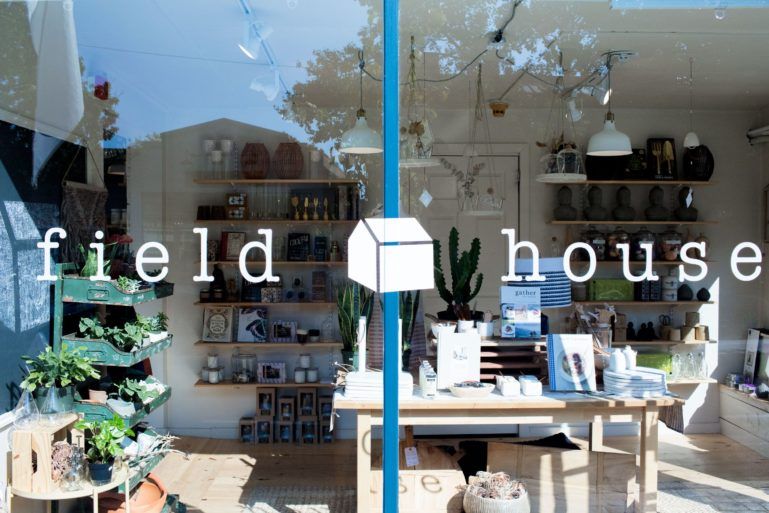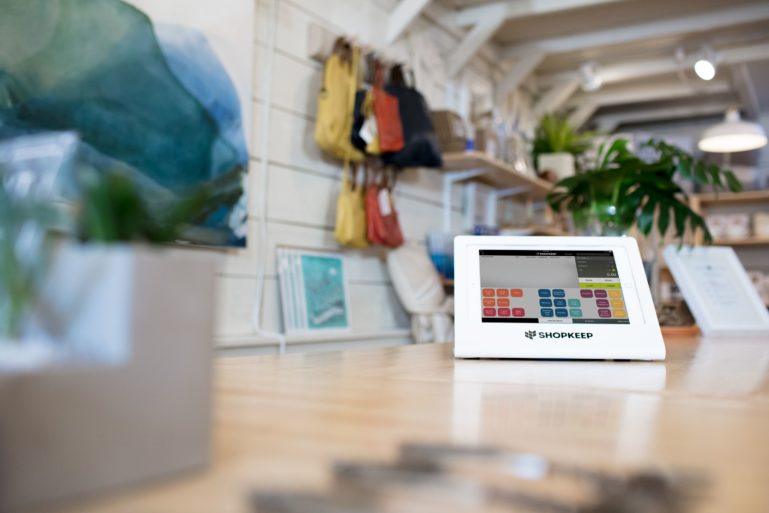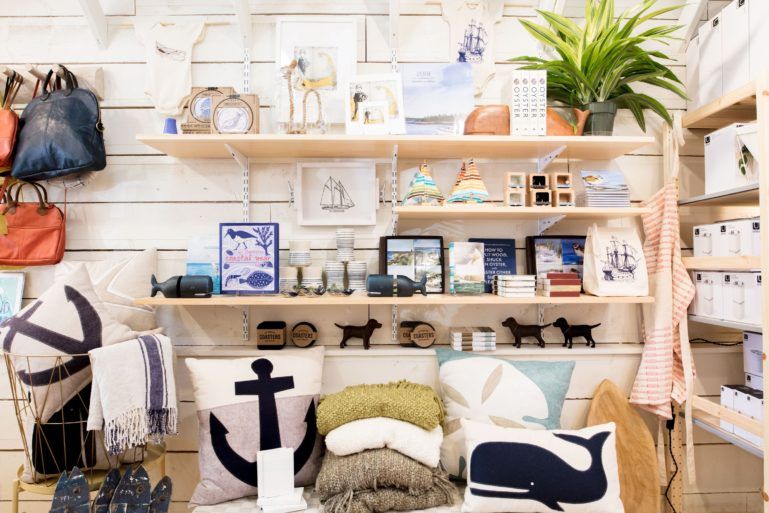
Retail 101: How to Set Up A Retail Business For Success
Starting a retail store is an enormous undertaking, especially for first-time retailers.
Despite the perceived simplicity of the business model – purchasing inventory and selling goods and services to customers – a lot more goes into the process of running a retail store.
Rather than jumping in with your eyes closed and assuming everything will work out, it’s best to be as prepared as possible. This guide can teach you everything you need to know about how to set up a retail business for success.
Let’s jump right in.
Have A Plan
No business, no matter how great the underlying concept, can succeed without a plan.
Before securing funding or renting a space or any other step required to get your retail store off the ground, it’s important to have a business plan in place. This goes beyond the surface level details – “My business will be open seven days a week with an inventory focused on adolescent and young adult women” – in order to truly explain the whats, whens, wheres, whys, and hows of your entire operation.
Writing a business plan should cover all of the major aspects of business development, including details like:
- An executive summary that explains the overarching goals and objectives of your business.
A description of your company, including how it will function and what products and services you plan on introducing to the marketplace. - An overview of your products, including both a holistic overview as well as any specifically planned SKUs
- A market analysis that encompasses details of the local metro area, economic trends, retail sales operations, competitor analysis, and any other form of due diligence that may help you better understand your position in the market.
- An organizational chart summarizing management structure and team member responsibilities
- Marketing and advertising plans that will be deployed to promote your business
- Funding expectations, including your initial investment and any other funding you anticipate over the first two to five years of operation
- Financial statements and projections, including an income statement and balance sheet
- Any other relevant information, like permits or patents
Rushing through a business plan is a recipe for disaster so give this process your all. Take as much time as you need to research, go over critical details, and outline financial plans and projections.
Remember, a business plan is both for your benefit and that of potential investors; banks, angel investors, and business partners will likely want to see your business plan before moving forward and financially backing your business. A strong business plan makes you look trustworthy and intelligent which will help convince potential partners to work with you and financial partners to invest in your business.
SEE ALSO: How To Write A Retail Business Plan In 7 Easy Steps
Seek Financing
Unless you have a large amount of money you plan to invest in your retail store, you will likely need to secure outside financing. For most entrepreneurs, this means a small business loan through a bank or brokerage firm.
When seeking a loan, determine exactly how much you will need and how long you will need access to outside funding before a loan will need to be repaid. This should be included in your business plan. Be prepared to discuss specifically how you will use your loan, like inventory purchasing, rent and utilities, or marketing.
In addition, review your credit history so that you can accurately plan for the kind of loan terms to expect. Never sign paperwork without fully understanding repayment options, loan duration, interest rate, and any penalties associated with early or delayed repayment.

Secure A Proper Space
The place you establish your brick-and-mortar shop can make all the difference. A remote location far outside of town that’s hard to get to will not yield the same results as a desirable spot in the city center; nor will the price tag be similar. When evaluating spaces, be sure to properly consider all factors, including:
- Size: how much room is adequately needed to display inventory? While a prohibitively small store can limit your options, a space that’s too large will feel empty and awkward.
- Price per square foot: Ranging anywhere from $10 to $1000 or more depending on your zip code, how much you’re paying for your space is very important. Note that some areas are more expensive than others, and moving as little as one or two blocks can save you thousands on rent.
- Storage and facilities: Your store is more than just the retail area. In addition to a place to sell your wares, you’ll also require room for dressing rooms, a storage area, an office space, and closets for things like cleaning supplies. If you need special space for shelving or display cases, you’ll need to consider these aspects as well.
- Renovation requirements or opportunities: Not all spaces will fit your vision. While remodeling is an option, some changes can be extremely costly, adding thousands to your start-up costs. Additionally, some landlords are quite rigid on permissible renovations, so be sure the changes you have in mind fit into your rental contract. Check with your landlord if you’re unsure.
- Pop-up shops: Since location can be tricky to navigate and securing a space generally requires a long-term commitment bounded by your lease agreement, pop-up retail can be a great alternative. This allows you to test out different locations without the long-term commitment. Think of it as dating your location as opposed to marrying it. It’s also a great practice run for flushing out some of your other retailing operations and merchandising strategies.
SEE ALSO: Retail Merchandising Tips And Tricks To Grow Your Business
Acquire Adequate Materials
A lot goes into an effective retail store. Simply producing, manufacturing, or purchasing inventory isn’t enough; instead, you need a whole store full of furniture and accessories. Common equipment includes, but is not limited, to:
- Shelves, full-size racks, rotating racks, hanging bars, mannequins, and other places to hang and display inventory
- Hangers, podiums, and other tools for displaying merchandise
- Security tags for protecting more valuable inventory
- Counters and display cases, including those that lock for enhanced security
- Pricing gun, price tag tape, stickers, and barcode scanners
- Cash registers, money drawers, and receipt paper
- Bags, including paper, plastic, or reusable options
- Mirrors, both in changing rooms as well as in clothing sections
- Banners, flags, and signs to advertise departments, aisle contents, sales, and promotions
- Shopping carts or baskets
- Chairs and curtain dividers for fitting rooms, if applicable
- Crowd control equipment to keep checkout lines organized
- Cleaning supplies
- Shelving for storage rooms
- Desks, chairs, computers, and office supplies for any office spaces
Hire A Strong Team
The team at your side can make or break your operations. A good team can assist customers, provide excellent customer service, increase the likelihood of a sale happening, as well as its dollar amount, and build customer loyalty. A bad team can turn customers away by contributing to a poor customer experience, cause revenue losses, and destroy your reputation. It’s a lot easier to hire the right people from the start rather than doing damage control six months from now.
When posting job ads, be explicit about duties and responsibilities, physical requirements, personality traits, and any relevant experience or qualifications. For example, if you are clear that you would like workers with high school diplomas, a positive attitude even under pressure, and the ability to lift up to 50 pounds at a time, you’re less likely to get applicants who are still in class and struggle to pick up a heavy backpack.
Also make sure you post job openings in places your prospective employees are likely to see, like social media ads for young adult employees and LinkedIn posts for experienced professionals.
Hiring is a marathon, not a sprint. Never hire someone with visible red flags just because they are available or eager. Instead, keep interviewing until you find the right fit.
When hiring, consider facets like:
- Schedule. It’s best to have fewer employees who can work longer hours than a slew of part-time staff members who only come in sporadically. Additionally, employees with many responsibilities may be unavailable when you need coverage.
- Demeanor. Look for congenial, kind, hardworking, and flexible individuals. These kinds of people are less likely to be rude or inappropriate to customers and will be able to handle high-stress periods.
- Behavior. While behavioral questions like “when was the last time you dealt with conflict, and how did you cope?” aren’t perfect, they can shed light on workplace attitudes.
- Gut instinct. Sometimes, your gut can be a help, but don’t let an initial positive impression overshadow potential downsides.

Manage Your Back Office
The front of the house and on your floor isn’t your only priority in running a successful retail business; back-office operations are equally important. There are behind the scenes tasks that are directly or indirectly responsible for revenue generation, like accounting, HR, employee management, and inventory management. Proper treatment of your back office can have a lasting effect on the financial health and sustainability of your business.
A Point Of Sale System
Few things matter as much as your Point of Sale (POS) system. An integral part of ringing in orders, tracking revenue, managing inventory, and keeping an eye on all data related to your operations, today’s POS systems go far beyond processing payments and acting like a glorified cash register. With an iPad POS solution like ShopKeep, it’s possible to handle virtually all back-office tasks in a single interface, managing everything from operational analytics to employee management with a few easy clicks.
Accounting And Bookkeeping
No business can survive without a proper approach to accounting. Without a solid way to balance income and expenses, it’s impossible to know whether you’re earning a profit – or losing money on a monthly basis.
From QuickBooks to Xero, there are plenty of ways to stay on top of your books. To simplify the process, choose accounting software that integrates with your POS for hassle-free bookkeeping.
Employee Management
Proper employee management is another key piece to set up a successful retail business. In order to help ensure your customers have a positive experience while shopping at your store, you need to make your business is properly staffed. Nothing is more frustrating for customers than walking into a business and expect to be assisted, only to find not one available staff member to help them.
Do you know what they do next? They walk right back out.
The best way to remedy this is to use your POS system to find your peak hours. When are customers coming in the most? What days of the week do you have the most transactions and sales revenue? What time period do you experience a spike in sales?
The answer to these questions will allow you to identify peak hours so that you can make sure to schedule the right amount of staff to serve your customers in a timely fashion.
Payroll
All of your employees deserve a paycheck. Whether you pay weekly or biweekly or even bi-monthly, the law states that employees must be paid in a reasonable time frame. Your payroll solutions should be seamless and simple, creating an efficient process that can generate checks, initiate direct deposit, and calculate the correct taxes to be withheld.

Inventory Tracking
Tracking inventory is a critical part of a successful retail operation. Without monitoring what’s selling, what’s not, the average turnover, and profit margin, it’s hard to know how well your store is performing or to accurately make any necessary adjustments. While inventory tracking can certainly be managed by hand, a POS that organizes and tracks inventory for you can offer a real-time look at what you have on hand, streamlining your internal processes.
Ecommerce Solutions
These days, it’s easier than ever for retailers to sell their goods online. Not only is it easier, but it’s practically necessary. 50 percent of consumers expect to buy online and pickup in-store and 73 percent are likely or very likely to visit a local store if the retailer provides product availability information online. Only 36 percent will venture to the physical location if no inventory availability information was available online.
How can you get product availability online in real-time? By making sure your POS system integrates with your ecommerce platform. This connection will allow product information to in sync across both channels.
Additionally, an ecommerce store, paired with your brick-and-mortar stores, allows customers to find you in the digital world and the physical one. It helps create an omnichannel experience for customers that can improve revenues and enhance reach.
Digital Marketing
Opening a store is a good first step, but there’s no guarantee that ‘if you build it, they will come.’ Without a solid approach to marketing, you’ll likely spend your first few months in the business working in a mostly empty store.
Digital marketing is a fast and affordable option that allows you to build a web presence and a social media following of hopefully thousands of potential customers. With an Instagram account, Facebook, Twitter, and Pinterest you can generate a buzz about your business before you even open your doors. And for more established businesses, it’s a great resource to engage with your customers and keep them informed of any special promotions or general communication that could impact them.
From social media posts to blogs, your digital marketing methods can help you build a long-lasting presence in your community. Think of it as modern-day word-of-mouth advertising that has the potential to reach millions over a very short period of time.
Put Customers First
This should go without saying, but we’re going to say it anyway. If nothing else, it serves as a reminder to always put yourself in the shoes of your customers. Notice we didn’t say, ‘the customer is always right.’ Rather, put yourself in their shoes and see your business from their perspective.
If you were a customer in your store, how would you want to be treated? Would you want to be greeted when you walked through the door? How great would a complimentary bottle of water be the next time you shopped at XYZ retail outlet? If there was a problem with a recent purchase, how would you want the company to resolve it or provide compensation for the inconvenience?
Did you know it takes 12 positive experiences to make up for one unresolved negative experience? And let’s not forget to mention Amazon when it comes to delivering a top-notch customer experience. They have become the gold standard for providing great customer service and have had a customer-centric mindset since day one.
Learn To Adapt
Far too many entrepreneurs are afraid of change. When things are working – or working well enough – it’s easy to stay the course and avoid taking chances. However, this strategy can backfire, especially when there’s room for growth and you’re failing to act on it.
For example, if you sell women’s apparel but skip emerging trends like the high-low fad that has dominated summer dresses over the last several years, you’re missing out on a significant chunk of revenue that could come from introducing even one or two new designs.
This is also true for business processes and operations. Just because there’s a certain way you’ve always done something, doesn’t mean it’s the most efficient.
Walking around your store with a clipboard and an inventory printout of an Excel document to take a physical inventory count isn’t the quickest way to get the job done anymore. Using a barcode scanner and walking around the store with your iPad is a much faster, and more accurate way to conduct a physical inventory count.
Rather than sticking with the status quo, keep a close eye on your business, monitor analytics, and consistently evaluate opportunities and what they mean for the short and long-term success of your business. With a little strategic planning and a willingness to adapt, you can keep your store on an upward trajectory. With the right approach to business and effective, time-saving tools by your side, how to set up a retail business doesn’t quite seem like an impossible question to answer anymore, does it?
Want to try ShopKeep for yourself?
Just answer a few easy questions.
Need help finding the right point of sale?
Just complete the form. We’ll call you right back to explain how ShopKeep can work for you.
Hit the ground running.Sprinting, in fact!
Read our free, comprehensive guide, Small Business 101, to learn all you need to know about starting a thriving business.

